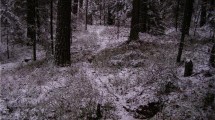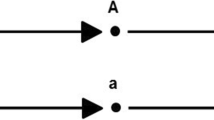Abstract
Based on the conception of life and semiosis as co-extensive an attempt is given to classify cognitive and communicative potentials of species according to the plasticity and articulatory sophistication they exhibit. A clear distinction is drawn between semiosis and perception, where perception is seen as a high-level activity, an integrated product of a multitude of semiotic interactions inside or between bodies. Previous attempts at finding progressive trends in evolution that might justify a scaling of species from primitive to advanced levels have not met with much success, but when evolution is considered in the light of semiosis such a scaling immediately catches the eye. The main purpose of this paper is to suggest a scaling of this progression in semiotic freedom into a series of distinct steps. The elleven steps suggested are: 1) molecular recognition, 2) prokaryote-eukaryote transformation (privatization of the genome), 3) division of labor in multicellular organisms (endosemiosis), 4) from irritability to phenotypic plasticity, 5) sense perception, 6) behavioral choice, 7) active information gathering, 8) collaboration, deception, 9) learning and social intelligence, 10) sentience, 11) consciousness. In light of this, the paper finally discusses the conceptual framework for biosemiotic evolution. The evolution of biosemiotic capabilities does not take the form of an ongoing composition of simple signs (icons, indices, signals, etc.) into composite wholes. Rather, it takes the shape of the increasing subdivision and control of a primitive, holophrastic perception-action circuit already committed to “proto-propositions” (dicisigns) reliably guiding action already in the most primitive species.

Similar content being viewed by others
Notes
It is often overlooked that central ideas of biological evolution were aired already during the French Enlightenment in mid-18th century, such as Buffon and Diderot (2011), but Lamarck was the first to articulate such ideas in a comprehensive theory.
The ascription of agency to the cell implied here is not meant to question the sufficiency of enzymatic causality. Enzymatic reactions, however, are operating inside a higher-order functionality determined by the cell as a holistic unit.
Prokaryotes are single-cell organisms without cell nuclei or any pronounced internal architecture.
Eukaryotic organisms are composed from large cells with nuclei and a rich internal structure, such as those found in plants, fungi, and animals, as well as in many single-celled organisms such as yeast and amoeba. The diameter of a eukaryotic cell lies in the range of 10–100 μm, whereas prokaryotic cells have diameters in the range of 0,2 to 2,0 μm. The internal space of a eukaryotic cell may easily contain thousands of prokaryotic cells.
Because only in this state reproducible data are easily obtained.
Aspen trees, however, are known to form clones of trees where thousands of shoots (ramets) are linked together to form one individual covering tens of hectars. Not only are these forests probably the largest “individuals” on Earth, they may also be among the oldest, some as old as 1.000 years. The strong emphasis in gene centered evolutionary theory on reproduction seems somewhat misplaced in such cases.
Although they have independent circuits for feeding and movement respectively the latter also serving fast escape behavior.
Whereby we mean something like “any mental state (x) about which it is meaningful to ask the question “how is it like to experience (x)?”
We do not address here the further semiotic step distinguishing human semiotic capabilities from those of other primates. One of us has argued a good candidate for that is “hypostatic abstraction”, that is, the ability of creating new thought objects on the basis of first-order objects - facilitating increasing self-control of thought and ensuing action (Stjernfelt 2014, ch. 6).
Our rejection of a purely iconic phase in evolution does not imply, thus, a rejection of hypotheses like Donald’s of a mimetic phase or Tomasello’s of a gestural phase in human cognition as a prerequisite to language; both mimesis and gestures are able to express proto-propositions.
Or: “Swim in this direction (S), there is sugar (P)”; biosemiotic proto-propositions hardly make the distinction between indicative and imperative and are most often both at the same time; they describe a state-of-affairs which immediately initiates action (Millikan 2006)
References
Ayre, D., & Grosberg, R. (1995). Aggression, habituation, and clonal coexistence in the sea anemone anthopleura elegantissima. The American Naturalist, 145, 427–453.
Bekoff, M., Allen, C. & Burghardt G. M. (eds.) (2002). The cognitive animal. empirical and theoretical perspectives on animal cognition, Cambridge, Mass.: MIT Press.
Ben-Jacob, E., Becker, I., Shapiro, Y., & Levine, H. (2004). Bacterial linguistic communication and social intelligence. Trends in Microbiology, 12(8), 366–372.
Bshary, R., Wickler, W., & Fricke, H. (2002). Fish cognition: a primate’s eye view. Animal Cognition, 5, 1–13.
Burghardt, G. M., Ward, B., & Rosscoe, R. (1996). Problem of reptile play: enrichment and play behavior in a captive Nile soft-shelled turtle, Trionyx triunguis. Zoo Biology, 15, 223–238.
Darwin, C. (1880). The power of movement in plants. London: Murray.
Deacon, T. (2012). Incomplete nature: How Mind Emerged from Matter. New York, NY: W.W. Norton & Company.
Diderot, D. (2011). Rameau’s nephew/D’Alembert’s dream, London: penguin (“D’alembert’s dream” originally written 1769)
Dretske, F. I. (1995). Naturalizing the mind. Cambridge, MA: MIT Press.
El-Hani, C. N., Queiroz, J., & Stjernfelt, F. (2010). Firefly femmes fatales: a case study in the semiotics of deception. Biosemiotics, 3, 33–55.
Esch, T., & Kristan, W. B. (2002). Decision-making in the leech nervous system. Integrative and Comparative Biology, 42, 716–724.
Evans, S., Bellairs, A. d’A., Charig, A. J., Dixon, D., Lillywhite, H. B., Groombridge, B. et al. (2008). Reptiles. The new encyclopedia of reptiles and amphibians. Oxford: Oxford University Press.
Godfrey-Smith, P. (1998). Complexity and function of mind in nature. New York: Cambridge University Press.
Gould, J. L. (2002). Can honey bees create cognitive maps? In M. Beckoff, C. Allen, and G. M. Burghardt (eds.), The cognitive animal. empirical and theoretical perspectives on animal cognition (pp. 41–45), Camb.Mass.: MIT Press.
Grau, J. W. (2002). Learning and memory without a brain. In M. Bekoff, C. Allen, & G. M. Burghardt (Eds.), The cognitive animal. Empirical and theoretical perspectives on animal cognition (pp. 77–87). Cambridge, MA and London: MIT Press.
Grutter, A. (1996). Parasite removal rates by the cleaner wrasse labroides dimidatus. Marine Ecology Pregress Series, 130, 61–70.
Hoffmeyer, J. (1992). Some semiotic aspects of the psycho-physical relation: the endo-exosemiotic boundary. In T. A. Sebeok, & J. Umiker-Sebeok (Eds.), Biosemiotics: The semiotic web 1991 (pp. 101–123). Berlin: Mouton de Gruyter.
Hoffmeyer, J. (1996). Signs of meaning in the universe. Bloomington, IN: Indiana University Press.
Hoffmeyer, J. (2006). Uexküllian planmässigkeit. Sign System Studies, 32, 73–97.
Hoffmeyer, J. (2008). Biosemiotics. An examination into the signs of life and the life of signs. Scranton and London: University of Scranton Press.
Hurford, J. (2007). The origin of meaning. Oxford: Oxford University Press.
Hurley, S., & Nudds, M. (Eds.) (2006). Rational animals. Oxford: Oxford University Press.
Jones, M., & Harper, J. L. (1987). The influence of neighbors on the growth of trees. i. the demography of buds in Betula pendula. Proceedings of the Royal Society of London Series B, 232, 1–18.
Kauffman, S., & Clayton, P. (2006). On emergence, agency, and organization. Biology and Philosophy, 21(4), 501–521.
Koopewitz, H., & Keenan, L. (1982). The primitive brains of Platyhelminthes. Trends in Neurosciences, 5, 77–79.
Kristan, W. B., & Shaw, B. K. (1987). Population coding and behavioral choice. Current Opinion in Neurobiology, 11, 826–831.
Kull, K., Deacon, T., Emmeche, C., Hoffmeyer, J., & Stjernfelt, F. (2009). Theses on biosemiotics: the Saka convention. Biological Theory, 4, 167–173.
Kupfermann, I., & Weiss, K. R. (2001). Motor program selection in simple model systems. Current Opinion in Neurobiology, 11(6), 673–677.
Lovejoy, A. O. (1948 [1936]). The great chain of being. A study of the history of an idea. Cambridge, MA: Harvard University Press.
Margulis, L. (1970). Origin of eukaryotic cells: Evidence and research implications for a theory of the origin and evolution of microbial, plant, and animal cells on the precambrian earth. New Haven/London: Yale University Press.
Margulis, L. & Chapman, M. J. (2009). Kingdoms and domains. an illustrated guide to the life of phyla on earth, W. H. Freeman & Co.
Margulis, L., & Fester, R. (Eds.) (1991). Symbiosis as a source of evolutionary innovation: speciation and morphogenesis. Cambridge, MA: MIT Press.
Millikan, R. (2006). Rational animals. In S. Hurley. & M. Nudds (eds.) Rational animals?(pp. 117–126). Oxford: Oxford University Press.
Odling-Smee, L., & Braithwaite, V. (2003). The role of learning in fish orientation. Fish and Fisheries, 4, 235–246.
Prescott, T. (2007). Forced moves or good tricks in design space? Landmarks in the evolution of neural mechanisms for action selection. Adaptive Behavior, 15, 9–31.
Silvertown, J., & Gordon, D. (1989). A framework for plant behavior. Annual Review of Ecological Systems, 20, 349–366.
Sonea, S. (1992). Half of the living world was unable to communicate for about one billion years. In T. Sebeok, & J. Umiker-Sebeok (Eds.), Biosemiotics: The semiotic web 1991 (pp. 375–392). Berlin: Mouton de Gruyter.
Spemann, H. (1938). Embryonic development and induction. The American Journal of the Medical Sciences, 196(5), 738.
Stjernfelt, F. (2014). Natural Propositions. The Actuality of Peirce’s Doctrine of Dicisigns. Boston: Docent Press.
von Frisch, K. (1967). The dance language and orientation of bees. Cambridge Mass.: Harvard University Press.
von Uexküll, J. (1928). Theoretische biologie. Berlin: J. Springer.
Waggoner, B. (2001). Eukaryotes and multicells: origin, Encyclopedia of Life Sciences, vol. London: Macmillan Publishers, 6, 585–593.
Author information
Authors and Affiliations
Corresponding author
Rights and permissions
About this article
Cite this article
Hoffmeyer, J., Stjernfelt, F. The Great Chain of Semiosis. Investigating the Steps in the Evolution of Semiotic Competence. Biosemiotics 9, 7–29 (2016). https://doi.org/10.1007/s12304-015-9247-y
Received:
Accepted:
Published:
Issue Date:
DOI: https://doi.org/10.1007/s12304-015-9247-y




